Trends in obesity and heart failure-related mortality in middle-aged and young adult populations of the united states, 1999-2022
- PMID: 40804364
- PMCID: PMC12344957
- DOI: 10.1186/s12872-025-05029-4
Trends in obesity and heart failure-related mortality in middle-aged and young adult populations of the united states, 1999-2022
Abstract
Background: Obesity is a growing cause of heart failure (HF) mortality in the younger population. However, trends and disparities in HF and obesity-related mortality in the middle-aged and young adult population of the US are not well studied. In this study, we aim to evaluate obesity and HF-related mortality trends for middle-aged and young adults and compare them among demographic and regional population subgroups.
Methods: Data from the Centers for Disease Control and Prevention Wide-ranging Online Data for Epidemiologic Research (CDC WONDER) were used to analyze death certificates from 1999 to 2022 for HF and obesity-related mortality in the middle-aged and young adult population of United States residents (aged 25-64). Age-adjusted mortality rates (AAMRs) per 100,000 people and annual percent changes (APCs) were calculated using Joinpoint regression analysis.
Results: From 1999 to 2022, there were a total of 58,290 deaths attributable to obesity and HF in middle-aged and young Americans. Overall, the age-adjusted mortality rate increased by 337% from 0.72 in 1999 to a peak of 3.15 in 2021. The AAMR increased by 154% from 0.72 in 1999 to 183 in 2019, with an average APC of 4.90 (95% CI 4.57-5.33). The proportion of HF-related deaths associated with obesity increased almost threefold, from 4.5% in 1999 to a peak of 12.45% in 2021. Men and non-Hispanic (NH) Black people had higher mortality rates throughout the study period, with worsening disparities. Worsening disparities were also observed in the southern US and rural areas.
Conclusion: Obesity-associated HF mortality in the young adult population of the US has increased since 1999, with worsening disparities. Men, NH Black people, the southern region, and rural areas have been disproportionately affected.
Keywords: Disparities; HF; Mortality; Obesity; United States.
© 2025. The Author(s).
Conflict of interest statement
Declarations. Ethics approval and consent to participate: Our study was exempt from institutional review board approval because the CDC WONDER database contains anonymized, publicly available data. No patient consent was needed for this study, as CDC WONDER contains anonymized, publicly available data. Consent for publication: Not applicable. Competing interests: The authors declare no competing interests.
Figures
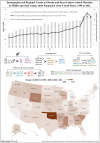
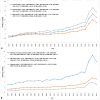
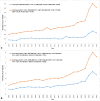
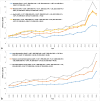
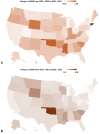
References
-
- Products - Data Briefs. - Number 508 - September 2024. 2024 [cited 2025 Feb 7]. Available from: https://www.cdc.gov/nchs/products/databriefs/db508.htm.
-
- Ward ZJ, Bleich SN, Cradock AL, Barrett JL, Giles CM, Flax C, et al. Projected U.S. state-level prevalence of adult obesity and severe obesity. N Engl J Med. 2019;381(25):2440–50. - PubMed
-
- Harrington J, Felker GM, Lingvay I, Pagidipati NJ, Pandey A, McGuire DK. Managing obesity in heart failure. JACC Heart Fail. 2024;12(1):28–34. - PubMed
LinkOut - more resources
Full Text Sources
Research Materials
Miscellaneous

